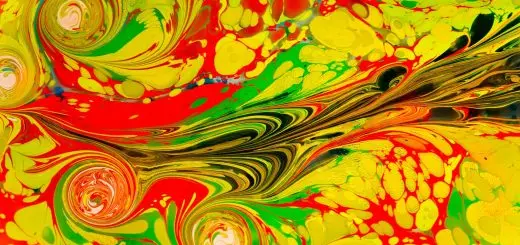The Legend of La Llorona: A Tragic Ghost Tale

Looking for more amazing products? Check out our online store and explore our collection here! Happy shopping!
Before diving in, please note: This post is for informational purposes only. If you’d like to know more about how we approach topics, feel free to check out our friendly Disclaimer Page.
Hey there, amazing readers! 
We’re committed to delivering quality posts, and your support (even just sticking around despite the ads) means everything to us. So, bear with us, and thanks for helping us keep the good vibes rolling. Now, on to the fun stuff!
TRANSLATE BUTTON AT THE END OF THE ARTICLE
A Quick Overview
La Llorona, or “The Weeping Woman,” is a ghostly figure steeped in sadness and mystery.
This haunting tale speaks of love, loss, and betrayal.
It’s a story that has echoed through generations, captivating audiences with its chilling essence.
As we dive into this legend, we’ll explore its origins, cultural significance, and modern interpretations, layered with lessons that resonate even today.
Discovering La Llorona: A Tale of Love and Loss
At the heart of La Llorona is a tragic story.
Picture a beautiful woman who falls deeply in love with a handsome man.
They share a passionate romance, but the bliss is short-lived.
As time passes, her lover’s affections wander, leading him to abandon her for another.
Heartbroken and filled with despair, she finds herself alone, grappling with an unbearable sorrow.
The crux of the tale unfolds when she, in a fit of rage and grief, takes the lives of her own children.
The pain of losing them echoes in her heart, and soon after, she meets her own demise.
As the story goes, her spirit cannot find peace.
She wanders the rivers and roads, crying out for her lost children, hence earning the name La Llorona, or "The Weeping Woman."
This story touches upon the most profound human experiences: love, loss, and the irreversible consequences of our actions.
It acts as a cautionary tale, reminding us of the fragility of relationships and the depth of maternal love.
The Origin Story: Where Did La Llorona Begin?
The tale of La Llorona has roots that trace back to ancient Mexican folklore.
Although the specifics vary, many agree that it originated in the regions that now comprise Mexico and parts of the southwestern United States.
Some scholars speculate that elements of the story align with indigenous myths, particularly those of the Aztecs, who had their own tales of mourning women.
In the earliest versions, La Llorona was perhaps associated with a goddess figure, embodying both fertility and sorrow.
Over time, her narrative morphed into a more personal story of anguish and betrayal.
By the time the Spanish colonizers arrived in the 16th century, tales of La Llorona were already woven into the cultural fabric of the region.
This adaptability made it resilient, allowing it to thrive through centuries of change.
Many believe the legend gained prominence during the colonial era, reflecting societal fears and norms.
The story served as a reflection of societal expectations around motherhood and loyalty.
As families grew and communities spread, the tale traveled alongside them, transforming with each telling, yet retaining its core message of lost love.
Cultural Significance: La Llorona in Latin Folklore
La Llorona remains a powerful symbol in Latin American culture.
In many communities, she is more than just a ghost story; she represents the struggles faced by women.
Her tale is often used to discuss themes of grief, maternal sacrifice, and the consequences of betrayal.
The legend has been passed down through generations, often shared as a means of imparting morals to children.
Parents would use her story to encourage obedience, warning kids not to wander too far from home lest they encounter La Llorona.
In many cases, children were told that her cries would serve as a reminder of the pain of losing loved ones.
In broader terms, La Llorona embodies the intersection of various cultural influences, fusing indigenous beliefs with Spanish colonial narratives.
The ghostly figure acts as a reminder of the historical traumas faced by women throughout time, making her a potent symbol of loss and resistance.
The Ghostly Figure: Descriptions Throughout History
Descriptions of La Llorona vary, but certain traits remain consistent.
She is often depicted as a tall, ethereal woman dressed in a long white gown.
Her hair is usually long and black, cascading down her back, often obscuring her face.
Many versions of the tale describe her as having sunken eyes filled with sorrow, reflecting the weight of her tragic past.
Her haunting cries, described as sorrowful wails, echo throughout the night, chilling the blood of anyone who hears them.
Some say she appears near bodies of water, especially rivers, where she searches for her lost children.
Others claim she floats aimlessly, forever trapped between the world of the living and the dead.
Interestingly, modern interpretations have added new dimensions to her character.
Some portray her as a figure of empowerment, representing the struggles of women who have suffered injustice.
This shift in perception illustrates how the legend adapts to contemporary societal challenges while keeping its core elements intact.
Key Themes: Love, Betrayal, and Maternal Instincts
The themes woven into the tale of La Llorona resonate deeply with the human experience.
At its core, the legend is about love and the lengths to which a mother will go to protect her children.
However, it also delves into the darker side of love—the betrayal that can shatter lives and lead to irreversible consequences.
It’s easy to empathize with La Llorona.
Her story raises poignant questions about the nature of love and the complexities of motherhood.
What drives a person to such despair?
How can love turn into something so tragic?
These themes provide fertile ground for exploration, prompting listeners to reflect on their own lives and relationships.
Moreover, the tale serves as a reminder that our actions can have profound repercussions.
La Llorona’s transformation from a loving mother to a grieving specter illustrates the devastating impact of betrayal.
It’s a narrative that warns us about the potential fallout of our choices.
Modern Interpretations: Movies and Literature Inspired
The legend of La Llorona has found its way into various forms of art, including literature, film, and music.
One of the most notable recent adaptations is the horror film "The Curse of La Llorona," part of the Conjuring Universe.
The movie reimagines the legend, introducing new characters and settings while maintaining the essence of the original tale.
Additionally, literature has embraced La Llorona, with authors exploring her character in diverse ways.
Some writers delve into her tragic backstory, humanizing her plight, while others focus on the horrors surrounding her ghostly presence.
This adaptation showcases the legend’s versatility, allowing it to resonate with contemporary audiences.
Poetry and folk songs also pay homage to La Llorona.
Through lyrical storytelling, artists convey her sorrow, transforming her into a voice for the voiceless.
These modern interpretations allow for a richer understanding of her character and the themes she represents.
The Haunting Cry: What Does “La Llorona” Mean?
In Spanish, “La Llorona” translates to “The Weeping Woman.” This name captures the essence of her character and the sorrow that defines her existence.
Her weeping symbolizes not only her personal tragedy but also the collective grief felt by many women throughout history.
The cry of La Llorona is described as a haunting lament, filled with anguish and despair.
When her wails pierce the night, they echo the messages of loss and longing.
For many, these cries serve as a reminder of their own struggles—the pain of lost love, the grief of losing a child, or the sorrow of unfulfilled dreams.
Interestingly, her cry transcends language barriers.
It speaks to something universal.
We’ve all felt loss, and La Llorona represents the raw emotions tied to that experience.
It’s a powerful reminder of our shared humanity, resonating with people from different cultures and backgrounds.
Variations of the Legend Across Different Regions
While the core narrative of La Llorona remains consistent, variations of the legend exist across different regions.
In some areas of Mexico, she is said to have drowned her children out of jealousy.
In others, she is depicted as a protective spirit, warning children against wandering too far into dangerous waters.
In the southwestern United States, particularly among Hispanic communities, La Llorona is often viewed as a cautionary figure.
Stories of her encounter often involve children hearing her cries and being told to return home quickly.
The legend serves as a tool for parents to instill fear, aiming to keep their children safe.
Moreover, some cultures have embraced La Llorona as a symbol of resilience.
She serves as a reminder of the struggles faced by women and their ability to persevere despite heartache.
This shift in interpretation highlights the adaptability of folklore, allowing it to resonate with diverse audiences.
La Llorona in Art: Artistic Representations Over Time
La Llorona has inspired countless artists, musicians, and writers over the years.
Her tragic story lends itself well to visual representation.
Artists have captured her essence in paintings, sculptures, and murals, often portraying her in moments of anguish or reflection.
Some artists focus on the emotional aspect of La Llorona, showcasing her sorrow through expressive brushwork and vibrant colors.
Others take a more abstract approach, symbolizing her haunting presence in eerie landscapes.
These artistic interpretations breathe new life into the legend, inviting viewers to connect with her on a deeper level.
Music also plays a significant role in the portrayal of La Llorona.
Traditional folk songs often tell her story, echoing the themes of love and loss.
These songs carry the weight of history, allowing listeners to experience the emotions tied to her journey.
Lessons from La Llorona: Morals of the Story
La Llorona’s tale isn’t just about horror; it’s rich with lessons.
One of the most significant morals revolves around the consequences of our actions.
Her story serves as a stark reminder that our decisions can have lasting effects, not just on ourselves but on others, especially those we love.
Another essential lesson is the importance of communication.
La Llorona’s tragedy stems from misunderstanding and betrayal.
Had open dialogues occurred, her fate might have been different.
This critical reflection encourages us to engage in honest conversations, ensuring our relationships remain strong.
Finally, La Llorona’s narrative underscores the idea of compassion.
She embodies the pain of lost love, making her a symbol of empathy for those who have suffered.
By acknowledging her sorrow, we can better understand our own feelings and the experiences of others, fostering a sense of community.
La Llorona’s Legacy: Continuing the Tradition Today
The legacy of La Llorona continues to thrive in modern culture.
Festivals, storytelling events, and artistic exhibitions celebrate her story, breathing new life into this ancient legend.
Communities gather to share tales, ensuring that the tradition remains alive for future generations.
Moreover, La Llorona has become a figure of empowerment for many.
Her story resonates with those who have faced adversity, capturing the struggles of women throughout history.
This shift in perception allows her to serve as a beacon of hope, illustrating the strength found in vulnerability.
Contemporary artists continue to draw inspiration from La Llorona, creating new works that reflect both her sorrow and resilience.
This ongoing engagement ensures that her story stays relevant, adapting to modern sensibilities while retaining its core message.
Embracing the Legend: Celebrations and Remembrance
In many cultures, La Llorona is remembered in celebrations that honor her legacy.
These events often include storytelling, music, and traditional dances that reflect the essence of her tale.
Families come together to share their interpretations, fostering a sense of community and connection.
During Día de los Muertos, the Day of the Dead, La Llorona’s image often appears alongside altars honoring deceased loved ones.
This act of remembrance reinforces the idea that her story is intertwined with the broader themes of loss and love, making her a poignant figure in the tapestry of generational lore.
In schools and community centers, La Llorona’s tale is frequently revisited, ensuring that new generations understand the nuances of her story.
Through workshops, performances, and discussions, her legacy continues to evolve, allowing individuals to engage with her narrative in meaningful ways.
Conclusion
The legend of La Llorona is a haunting tale that transcends time and culture.
It speaks to the complexities of love, the pain of loss, and the enduring strength found in sorrow.
As we explore her story, we are reminded of our shared humanity and the lessons we can learn from her tragic journey.
La Llorona’s legacy lives on, inspiring art, literature, and personal reflections, ensuring that her voice continues to resonate through generations.

The Enlightenment Journey is a remarkable collection of writings authored by a distinguished group of experts in the fields of spirituality, new age, and esoteric knowledge.
This anthology features a diverse assembly of well-experienced authors who bring their profound insights and credible perspectives to the forefront.
Each contributor possesses a wealth of knowledge and wisdom, making them authorities in their respective domains.
Together, they offer readers a transformative journey into the realms of spiritual growth, self-discovery, and esoteric enlightenment.
The Enlightenment Journey is a testament to the collective expertise of these luminaries, providing readers with a rich tapestry of ideas and information to illuminate their spiritual path.
Our Diverse Expertise
While our primary focus is on spirituality and esotericism, we are equally passionate about exploring a wide range of other topics and niches 

To ensure we provide the most accurate and valuable insights, we collaborate with trusted experts in their respective domains 
Our blog originally focused on spirituality and metaphysics, but we’ve since expanded to cover a wide range of niches. Don’t worry—we continue to publish a lot of articles on spirituality! Frequently visit our blog to explore our diverse content and stay tuned for more insightful reads.
Hey there, amazing reader! 
Check out our store here and take a peek at some of our featured products below! Thanks for being awesome!












